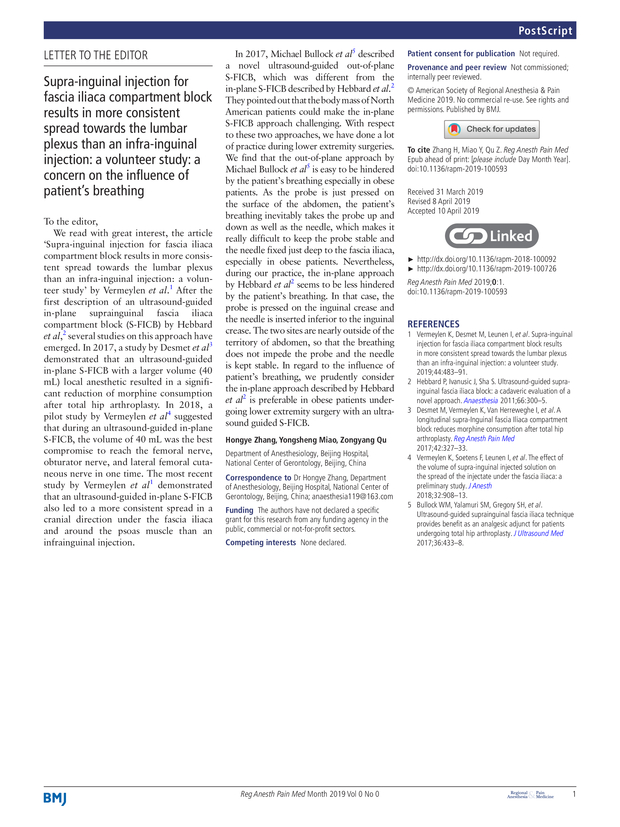Article Text
PostScript
Letter to the Editor
Supra-inguinal injection for fascia iliaca compartment block results in more consistent spread towards the lumbar plexus than an infra-inguinal injection: a volunteer study: a concern on the influence of patient’s breathing
Statistics from Altmetric.com

You do not have access to the full text of this article, the first page of the PDF of this article appears above.
Footnotes
Funding The authors have not declared a specific grant for this research from any funding agency in the public, commercial or not-for-profit sectors.
Competing interests None declared.
Patient consent for publication Not required.
Provenance and peer review Not commissioned; internally peer reviewed.
Linked Articles
- Original article
- PostScript


